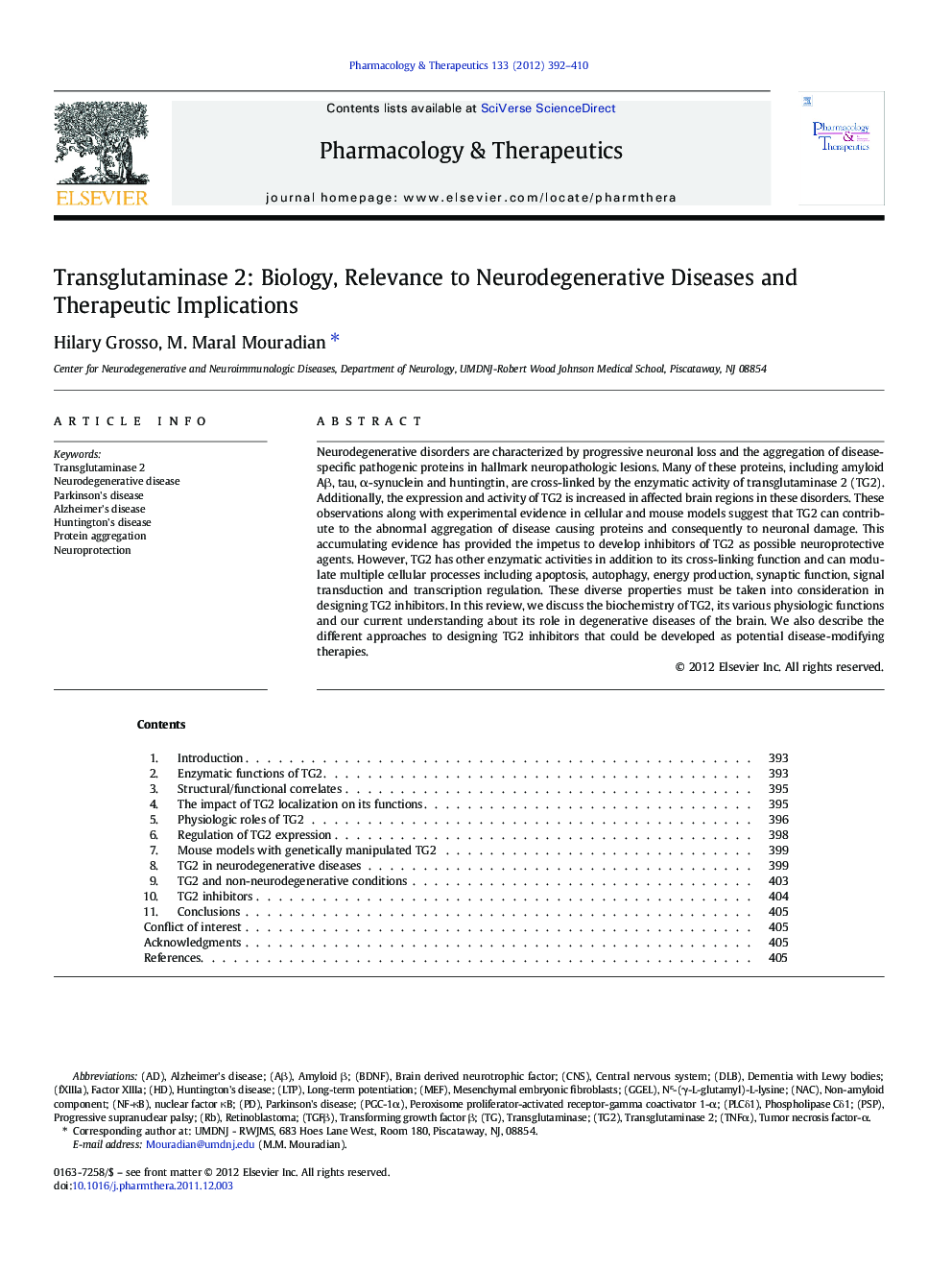| Article ID | Journal | Published Year | Pages | File Type |
|---|---|---|---|---|
| 2563516 | Pharmacology & Therapeutics | 2012 | 19 Pages |
Neurodegenerative disorders are characterized by progressive neuronal loss and the aggregation of disease-specific pathogenic proteins in hallmark neuropathologic lesions. Many of these proteins, including amyloid Αβ, tau, α-synuclein and huntingtin, are cross-linked by the enzymatic activity of transglutaminase 2 (TG2). Additionally, the expression and activity of TG2 is increased in affected brain regions in these disorders. These observations along with experimental evidence in cellular and mouse models suggest that TG2 can contribute to the abnormal aggregation of disease causing proteins and consequently to neuronal damage. This accumulating evidence has provided the impetus to develop inhibitors of TG2 as possible neuroprotective agents. However, TG2 has other enzymatic activities in addition to its cross-linking function and can modulate multiple cellular processes including apoptosis, autophagy, energy production, synaptic function, signal transduction and transcription regulation. These diverse properties must be taken into consideration in designing TG2 inhibitors. In this review, we discuss the biochemistry of TG2, its various physiologic functions and our current understanding about its role in degenerative diseases of the brain. We also describe the different approaches to designing TG2 inhibitors that could be developed as potential disease-modifying therapies.
